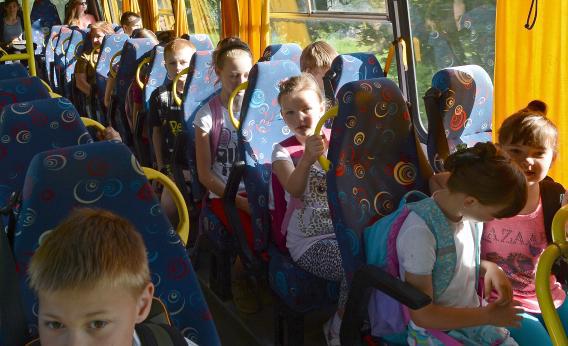It seems nothing is sacred, besides preserving low taxes for the wealthy, when it comes to the slash-and-burn austerity era. Hoover, Ala., a suburb of Birmingham, has decided to cut its school bus system, not because kids aren’t using it—they are—but in order to save money, to the tune of $2.5 million a year. The district released a statement justifying this decision by saying it was “made as part of a plan to move more aggressively toward protecting a long term, sustainable, high level of quality educational services the citizens of Hoover expect for their children despite a climate of dwindling resources.”
It’s great that they want to keep the schools at a high-quality level, but it won’t do much good for the students who can’t make those excellent classes because they don’t have transportation. For those kids, Hoover’s plan amounts to telling them they’re on their own:
The system has designated the beginning of the 2014-2015 school year for the change in order to allow an extended time for adjustments to be made by parents whose children now ride buses to and from school, as well as provided adequate time for affected transportation employees to obtain employment in another system or explore other employment opportunities.
If your work schedule doesn’t allow you to drive your kid to school, well, look! A squirrel!
Hoover is a rapidly growing suburb, which explains why there’s a strain on the school district, but it’s hard not to raise an eyebrow at the choice to save money by cutting a program that helps equal out things between the more and less economically advantaged students. That’s especially true when you consider that Hoover is a prominent example of the explosion of diversity in suburbs that were often initially established by white flight—the community gained more black residents than white residents in the years 2000-2010. As Rebecca Berg wrote in the New York Times last year about the trend, “[L]iving in a suburb can often afford minority groups access to better schools and resources, while fostering a sense of community that encourages civic engagement and a host of other benefits.” Unfortunately, if the reaction that a suburb has to its new influx of residents is to cut services and take away resources, that’s not going to feel very welcoming. Even though kids who rely on bus service come from every racial and class background, the rollback of public transportation just as the school’s population is getting more diverse raises questions. Especially since the same school district that can’t afford to get every kid to class still somehow has money to pay for iPads for the students that are able to find a ride.
Hoover has had a sprinkling of problems already when it comes to embracing progress. In 2011, the Southern Poverty Law Center criticized the high school for refusing to let a student wear a T-shirt that said, “Gay? Fine by me.” After negative publicity, the school changed its mind. Hoover High School popped back into the news back in May when a black female student sued, claiming that the school officials reacted to her dozing off in class by basically getting her arrested, which scared her so badly she threw up in the police car. Now they’re in the news for taking kids whose parents can’t afford to drive them to school and, well, I’d say throw them under the bus if they had one.
